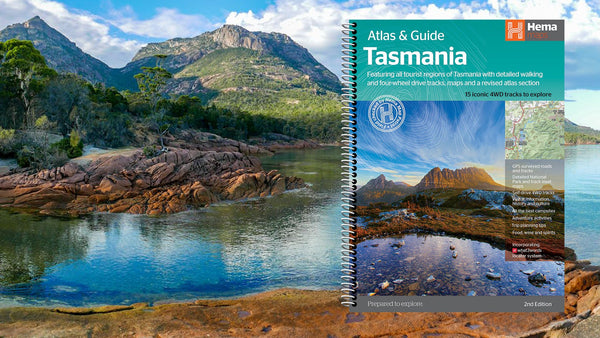- Australia ▾
- Topographic
▾
- Australia AUSTopo 250k (2024)
- Australia 50k Geoscience maps
- Australia 100k Geoscience maps
- Australia 250k Geoscience maps
- Australia 1.1m Geoscience maps
- New Zealand 50k maps
- New Zealand 250k maps
- New South Wales 25k maps
- New South Wales 50k maps
- New South Wales 100k maps
- Queensland 10k maps
- Queensland 25k maps
- Queensland 50k maps
- Queensland 100k maps
- Compasses
- Software
- GPS Systems
- Orienteering
- International ▾
- Wall Maps
▾
- World
- Australia & New Zealand
- Countries, Continents & Regions
- Historical
- Vintage National Geographic
- Australian Capital Territory
- New South Wales
- Northern Territory
- Queensland
- South Australia
- Tasmania
- Victoria
- Western Australia
- Celestial
- Children's
- Mining & Resources
- Wine Maps
- Healthcare
- Postcode Maps
- Electoral Maps
- Nautical ▾
- Flags
▾
- Australian Flag Sets & Banners
- Flag Bunting
- Handwavers
- Australian National Flags
- Aboriginal Flags
- Torres Strait Islander Flags
- International Flags
- Flagpoles & Accessories
- Australian Capital Territory Flags
- New South Wales Flags
- Northern Territory Flags
- Queensland Flags
- South Australia Flags
- Tasmania Flags
- Victoria Flags
- Western Australia Flags
- Gifts ▾
- Globes ▾
Dear valued customer. Please note that our checkout is not supported by old browsers. Please use a recent browser to access all checkout capabilities
The Cotswolds Beyond Diddly Squat: A Pilgrim’s Guide to Bucolic Enlightenment

You’ve done it.
You’ve joined the queue, endured the wind, and survived the faint scent of petrol, bacon, and despair to get into the now-mythical Diddly Squat Farm Shop. You bought the jam. Perhaps even some meat so organic it probably had a name and opinions. Maybe you spotted a Clarkson—possibly the Clarkson, flanked by camera crew and sheep. You felt the holy fire of ironic British celebrity consumerism burn briefly in your chest.
Now what?
You’re in the Cotswolds. The real Cotswolds. And this, dear reader, is where your journey truly begins. Because while Diddly Squat is the rowdy, ironic front door of the region—brash, lovable, and full of off-brand swearing—the rest of the Cotswolds is a much stranger, quieter affair.
Let’s set off, shall we?
I. Daylesford Organic – Where Bread Is Religion and Basil Costs Extra
Not five miles from Diddly Squat is the holy cathedral of affluent sustainability: Daylesford Organic. Imagine if Selfridges married a very handsome farm. Now imagine that farm spent a year in Provence drinking biodynamic wine and learning how to whisper.
This is not a shop. It is a curated universe.
The car park alone is a safari of Range Rovers, vintage Land Rovers, and the odd gleaming electric car driven by someone called “Kit” who owns a media company and an ethically sourced Labradoodle.
Inside, you will find people discussing sourdough starters as if they are godchildren. There are soaps here made from goat milk, ash, and ambition. The butcher looks like he moonlights as a Calvin Klein model. Every vegetable is stacked with architectural precision, and you will be charged £14.50 for a cabbage. And yet you will pay it. Gladly.
Because for a moment—just one shimmering, honey-coloured moment—you will feel as if your life is together. That you too could grow your own herbs and wear linen and speak softly and never, ever raise your voice on a Zoom call.
You leave lighter of wallet and heavier of smugness. The road calls.
II. Stow-on-the-Wold – Tea, Antiques, and Eccentric Regret
You arrive in Stow like a time traveller in boots. It sits high on a hill, the town itself a careful mess of winding lanes, ancient pubs, and antique shops you could disappear into and not emerge for a decade.
Wander slowly. Always slowly.
You’ll notice signs like Ye Olde Curiosity Cabinet or Sir Cedric’s Rummage Emporium, where inside, a man who resembles a forgotten lord will show you a Victorian dentist’s chair and tell you it’s “a fine conversation piece.”
There are swords. Always swords. Nobody quite knows why.
Find a tea room. Make sure it has floral china and at least one doily. Order something absurd like “gentleman’s tea” which is just regular tea plus ham. Read the local paper. Note the headlines—“Cat Rescued From Second Tree This Month”—and feel the speed of life dial back by half.
You are now ready for The Porch House, England’s oldest inn and quite possibly a portal to another time. Sit in a low-beamed alcove with a pint of Hook Norton and watch the fire crackle like a medieval screensaver. You will not want to leave.
But you must.
The road coils onward.
III. Bourton-on-the-Water – Too Pretty to Be Trusted
There is something wrong with Bourton.
Not in a Scooby-Doo way, but in the sense that it is too perfect. Like a film set you’re not convinced is real. Little stone bridges arch over a whispering stream. Ducks march with the confidence of local politicians. Tourists murmur reverently as if in a chapel.
But you are one of them. Accept it.
Pop into the Model Village, which is a one-ninth-scale replica of Bourton itself, crafted in the 1930s by someone with immense patience and mild God-complex tendencies. Peer into a model church that contains a model of the model village—yes, it is that recursive.
Bourton is good for ice cream, postcards, and mild identity crises. Just don’t try to park here. That way lies madness and marital discord.
IV. Broadway Tower – Where You Climb to Nowhere and Are Glad of It
Next: Broadway Tower.
This folly—built by a man with too much money and not enough hobbies—sits high on a Cotswold escarpment, looking out over… well, everything. Allegedly 16 counties. Possibly more if your vision is unnaturally good or you brought binoculars and a profound sense of hope.
Park at the bottom. Climb slowly.
Each step up the grassy slope feels like penance for a previous life lived too fast. You reach the top, breathless, and the wind greets you like a slap from an old friend.
This tower served no strategic purpose. It was built so people could look at it and say, “Well. That’s nice.”
And it is nice. Wildly unnecessary. Deeply British.
Sit on the hill. Eat a sandwich. Watch dogs gallop in ecstatic loops. Watch the clouds do nothing of consequence. And feel the urgent itch of modern life quietly exhale.
V. Snowshill Manor – One Man’s Hoarding Is Another’s Spiritual Journey
There is nothing normal about Snowshill Manor.
It was the home of Charles Paget Wade, an eccentric architect and collector who lived like a bohemian magpie. He filled this place with oddities—samurai armour, antique bicycles, mechanical toys, harpsichords, violins, masks, and objects with no discernible function beyond being fascinating.
Wade himself lived in a cottage out back because he didn’t want to disturb the aesthetic harmony of his collection. That’s commitment.
Walking through the manor feels like stepping into a mind that forgot to edit. It’s dazzling, deranged, and strangely moving. A testament to the obsessive beauty of collecting for joy—not value. No labels. No explanations. Just the artifacts of a life lived entirely off-script.
VI. A Walk Along the Windrush Way – For the Soul and the Soles
Now you walk.
Not to burn calories. Not for a step count. But to connect your heart to the land through the soles of your boots.
Start in Bourton and walk east toward Winchcombe, following the Windrush Way. It’s about 14 miles of rolling countryside, slow rivers, wooden gates, kissing stiles (no pressure), and fields so green they make you suspicious.
Walk until the noise in your head quiets. Walk until you stop checking your phone. Walk until you no longer need to take photos because you realise—you are here. Fully.
You’ll pass ancient hedgerows, lone trees, and maybe a horse that stares at you like it knows your secrets. Nod. Carry on.
You arrive in Winchcombe footsore and elated, the good kind of tired that only comes from a day spent truly alive.
VII. The Bell at Sapperton – A Pint at the End of the World
There are pubs, and then there are pubs.
The Bell at Sapperton is buried deep in a fold of Gloucestershire like a treasure only the gods and travel writers know about. It doesn’t boast. It doesn’t shout. It hums.
Inside: flagstone floors, beams worn smooth by generations of elbows, a menu that reads like poetry (“pigeon breast with truffle parsnip puree”), and a fire that never quite dies.
Order a pint of something brewed within sniffing distance. Order the pie. There is always a pie.
Listen.
You’ll hear conversations that drift between hedge fund whispers, garden woes, book drafts, lambing season, politics, and ghosts. Nobody’s trying to be cool. Everyone is cool. In the way that only people who don’t care about being cool can be.
VIII. Detour: Northleach, Tetbury, and Other Haunting Villages
Time permitting—and it always should be—take detours.
-
Northleach has a church so grand it makes the local sheep nervous.
-
Tetbury is so posh it occasionally forgets it’s not a Swiss boutique.
-
Naunton is the kind of village where you half expect Miss Marple to appear, knitting something sinister.
-
Upper Slaughter and Lower Slaughter are far prettier than their names suggest, which is always fun for an Instagram caption.
Drive slowly. The lanes here do not forgive arrogance. Roll down your window. Let the countryside in.
IX. Cider with Everything – Liquid Philosophy
At some point, someone will hand you a cider.
Possibly cloudy. Possibly brewed in a barn by a man with three teeth and a surprisingly nuanced take on Middlemarch. This is the drink of the land. Earthy. Unapologetic. Slightly dangerous.
Drink it in a garden, with the buzz of bees and the scent of cow parsley. Drink it on a hill, looking out at villages so postcard-perfect they make your eyes hurt. Drink it and feel something ancient stir.
Not tipsiness—belonging.
X. The Leaving, and the Promise
Eventually, the real world will tap your shoulder.
You will drive out of the Cotswolds with a bag full of chutney, a camera full of sheep, and a heart that has somehow grown quieter. Calmer.
Because here’s the thing.
The Cotswolds doesn’t demand. It doesn’t dazzle in neon. It doesn’t reinvent itself to keep your attention.
It waits. Softly. With hills like sighs, stone like memory, and days that don’t rush but settle.
You will leave. You will miss it immediately. And you will come back—not because of Diddly Squat, or Daylesford, or the pies, or even the cider.
But because somewhere in this landscape, a quieter version of you exists. And it’s always waiting.
Leave a comment
Comments will be approved before showing up.
Also in Travel Writings / Product Reviews

Where the Sun Never Sets: A Glorious History of Geochron World Clocks
The Geochron, whether mechanical or digital, offers more than information. It offers perspective. It reasserts the idea that we are part of a rotating story—lit by the sun, divided by clocks, and unified by the gentle ticking of planetary rhythm.

Tracks, Trails & Tassie Tales: A Rambler’s and Rover’s Guide to Tasmania
Tasmania doesn’t just offer adventure. It insists on it. It pulls you into its wilderness, tests your knees and diff locks, and then offers you a view that resets your understanding of beauty.

Greenland for Sale? A Gall–Peters Perspective on Cartographic Ego and Arctic Aspirations
The next time someone proposes to buy a country, they’ll pause. They’ll consult a different map. One that doesn’t overstate the icy or understate the equatorial.
Christopher O'Keeffe
Author